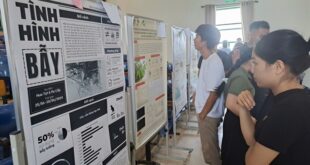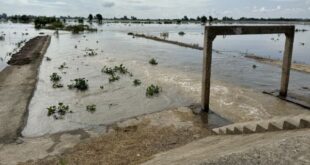
HÀ NỘI — Việt Nam is joining common efforts to restore ecosystems in response to International Day for Biological Diversity 2022 (May 22) themed “Building a shared future for all life”.
Currently, the risk of biodiversity degradation and ecosystem imbalance remains high, directly affecting food security and driving people towards the risk of poverty, genetic resource depletion and especially climate change. Therefore, the restoration and protection of ecosystems and biodiversity have become a global issue.
Việt Nam currently boasts 173 conservation zones with a total area of more than 2.5 million hectares, including 33 national parks, 66 nature reserves, 18 species and habitat conservation areas, and 56 landscape protection zones. In particular, the country houses nine UNESCO-recognised “World Biosphere Reserves” and three “World Natural Heritage Sites”, nine Ramsar sites and 10 ASEAN Heritage Parks.
Việt Nam has 128 special-use forests, mostly small and scattered ones, that make up the country’s system of protected areas. However, many of them have degraded not only in scale but also in the quality of habitat.
In order to improve the declining quality of the environment, localities across the country have actively responded to the tree-planting movement to protect the ecological environment and limit the negative effects of climate change.
Việt Nam is considered one of the most important areas in the flyway network of migratory and endemic birds, with 63 globally important bird zones and seven endemic bird zones.
By now, the country has recorded more than 900 bird species, of which 99 need conservation attention, 10 are critically endangered, and 17 are endangered.
On January 28, Deputy Prime Minister Lê Văn Thành signed a decision approving the national biodiversity strategy to 2030 with a vision towards 2050.
Under the strategy, the Government targets expanding the area of protected ecosystems to nine per cent of the country’s land area, and protected marine and coastal areas to three to five per cent of the total sea area.
Meanwhile, the forest coverage is expected to be kept at 42-43 per cent and at least 20 per cent of the degraded ecosystem area will be restored.
The Government will give priority to the conservation of wildlife species, particularly endangered, rare and precious fauna and flora species.
With a vision towards 2050, major natural ecosystems, endangered species, and precious and rare genetic resources will be restored and effectively preserved.
To that end, the strategy sets out key tasks such as intensifying biodiversity conservation and restoration, conserving and restoring endangered wild species, stepping up the conservation of genetic resources, and controlling activities that would harm biodiversity.
Most recently on May 17, the Deputy PM signed a decree on a number of urgent tasks and solutions to protect wild and migratory birds in Việt Nam. — VNS
- Reduce Hair Loss with PURA D’OR Gold Label Shampoo
- Castor Oil Has Made a “Huge” Difference With Hair and Brow Growth
- Excessive hair loss in men: Signs of illness that cannot be subjective
- Dịch Vụ SEO Website ở Los Angeles, CA: đưa trang web doanh nghiệp bạn lên top Google
- Nails Salon Sierra Madre
 VnExpress News The News Gateway of Vietnam
VnExpress News The News Gateway of Vietnam





